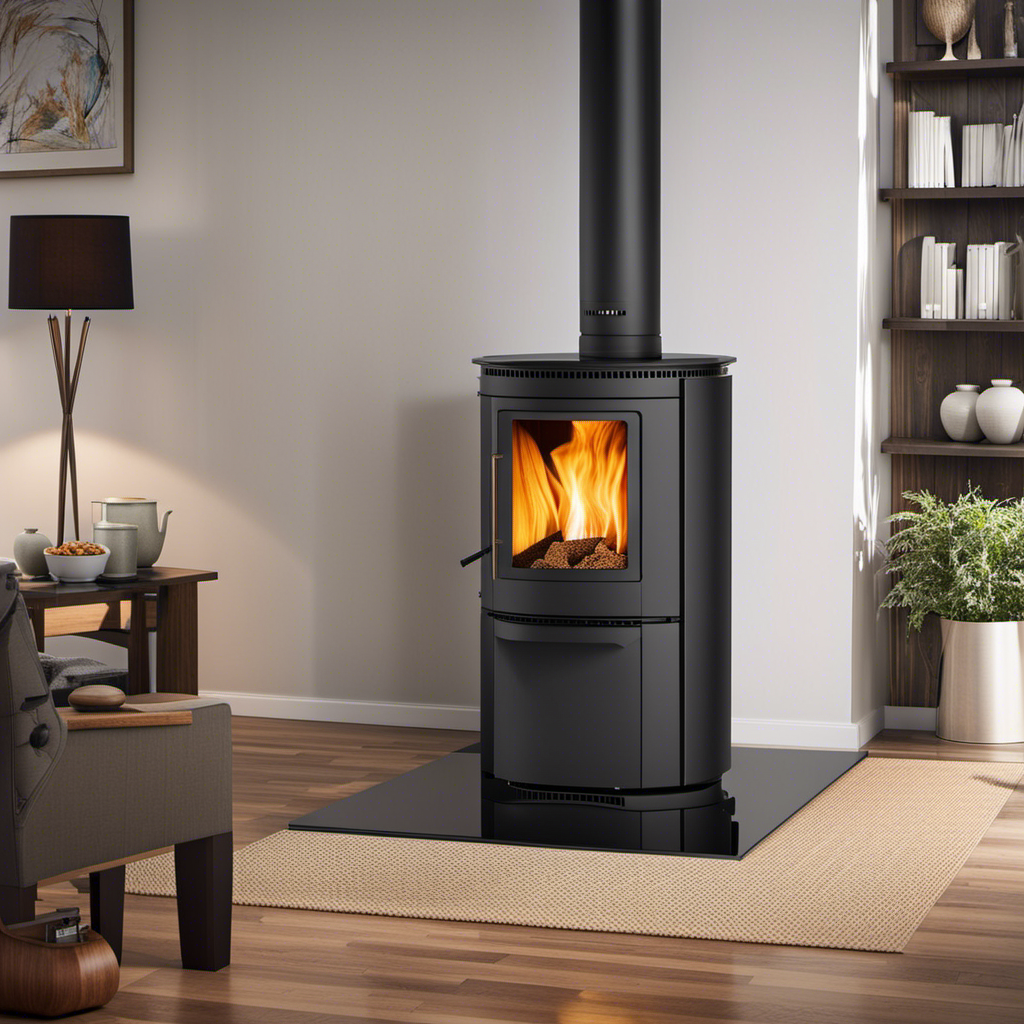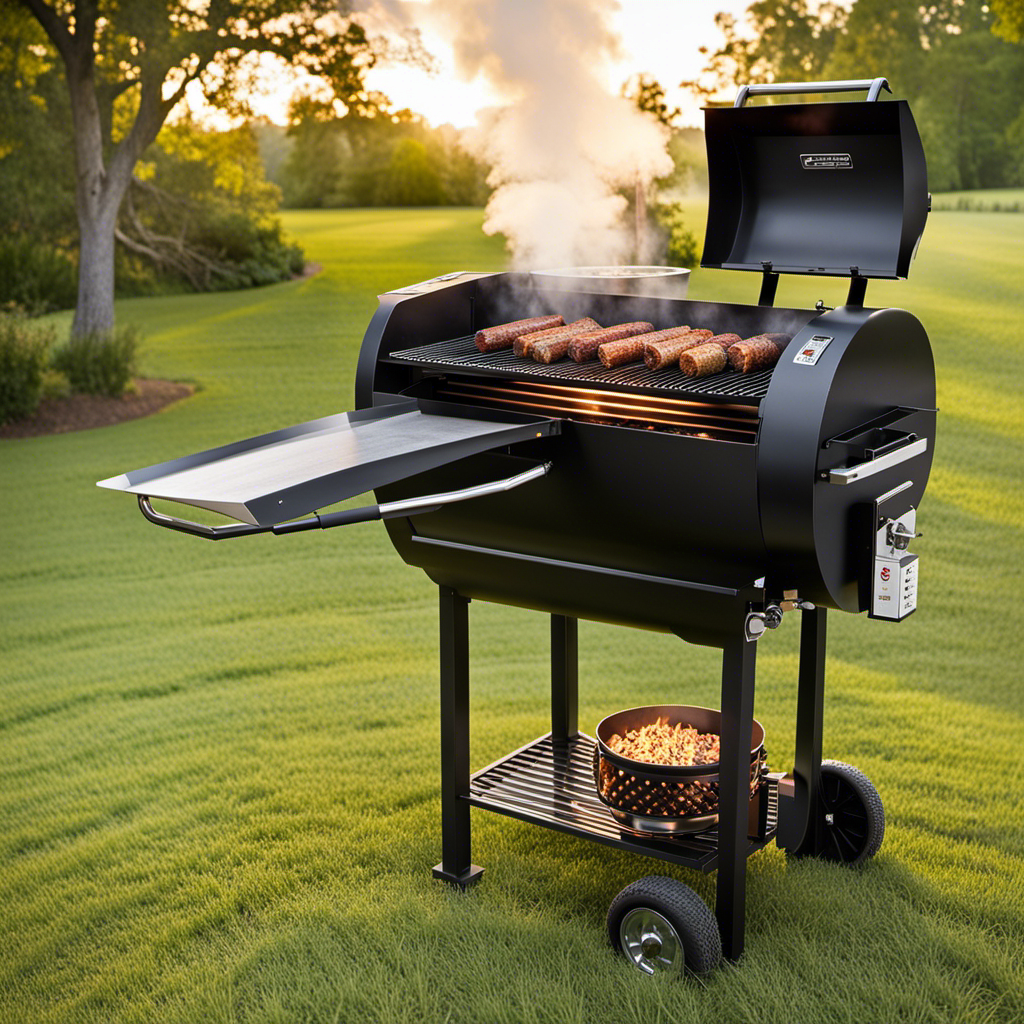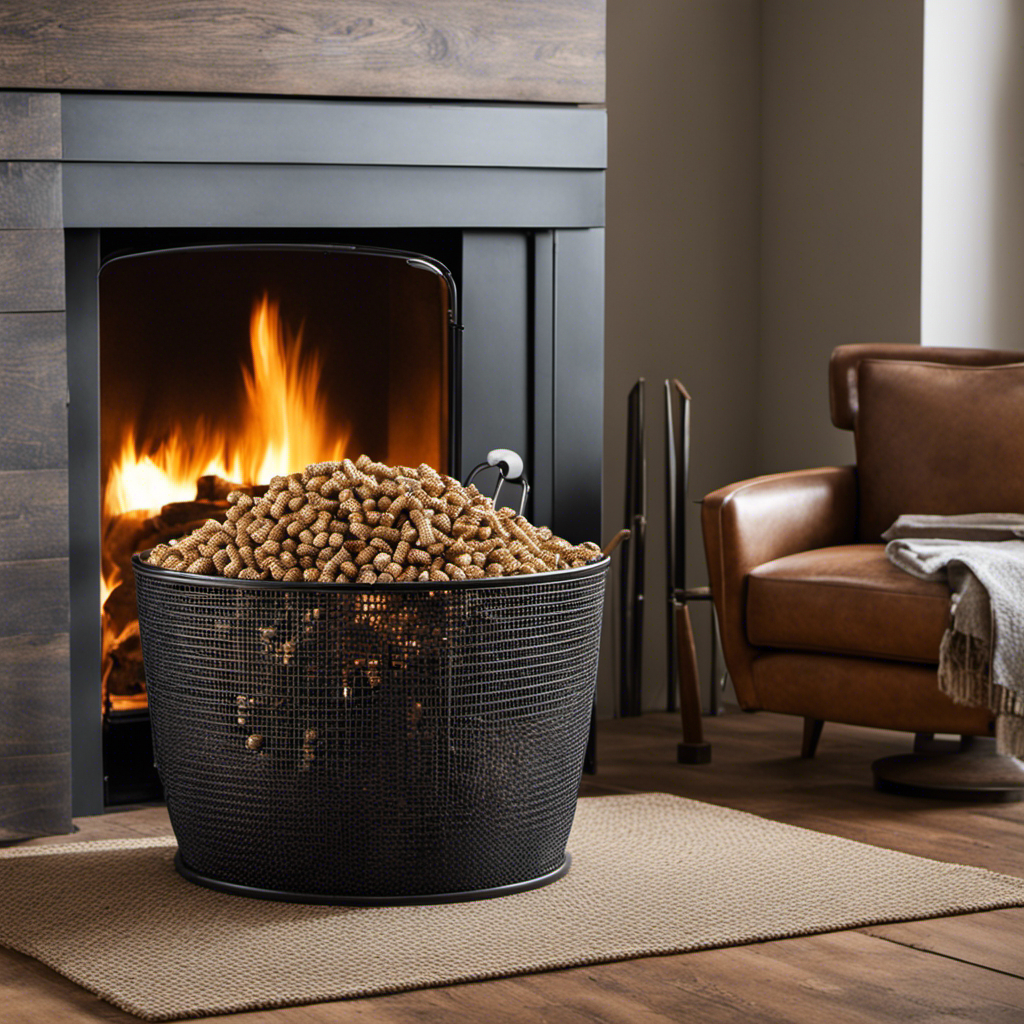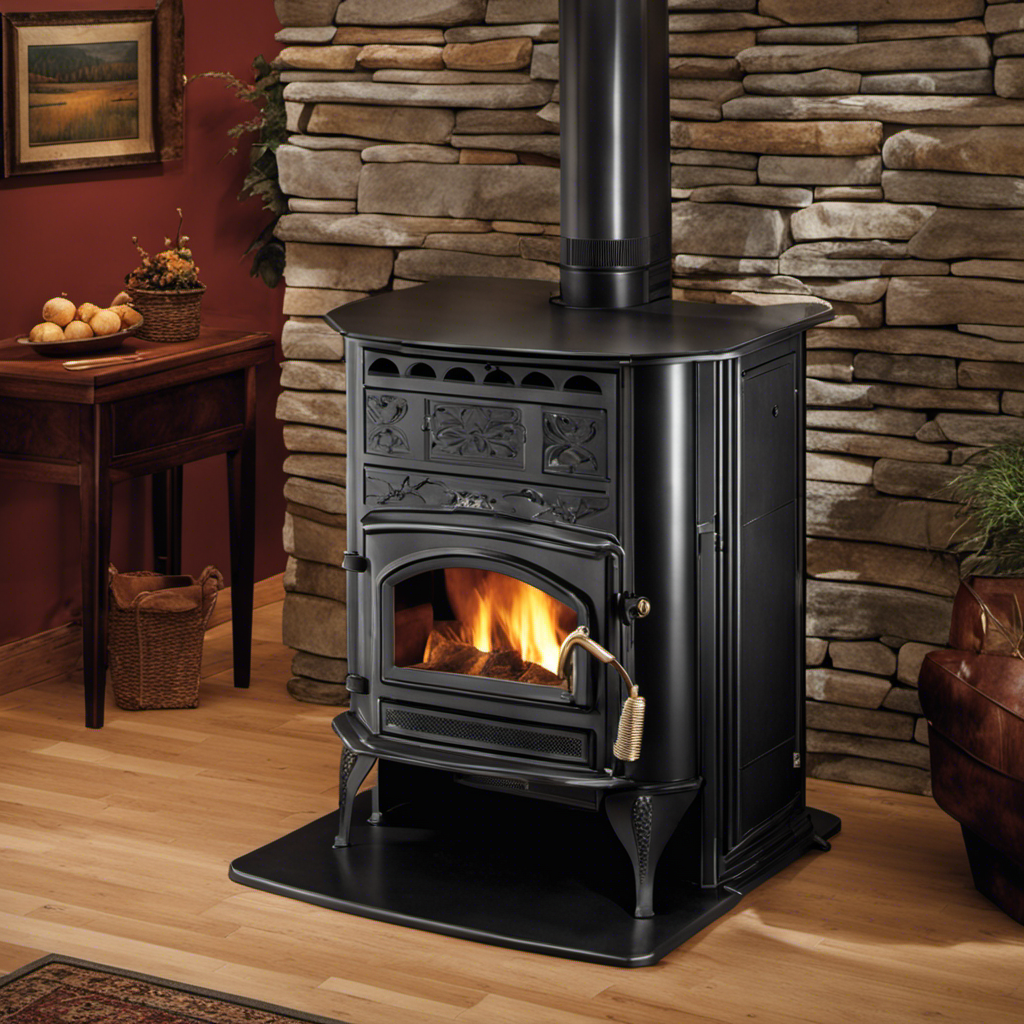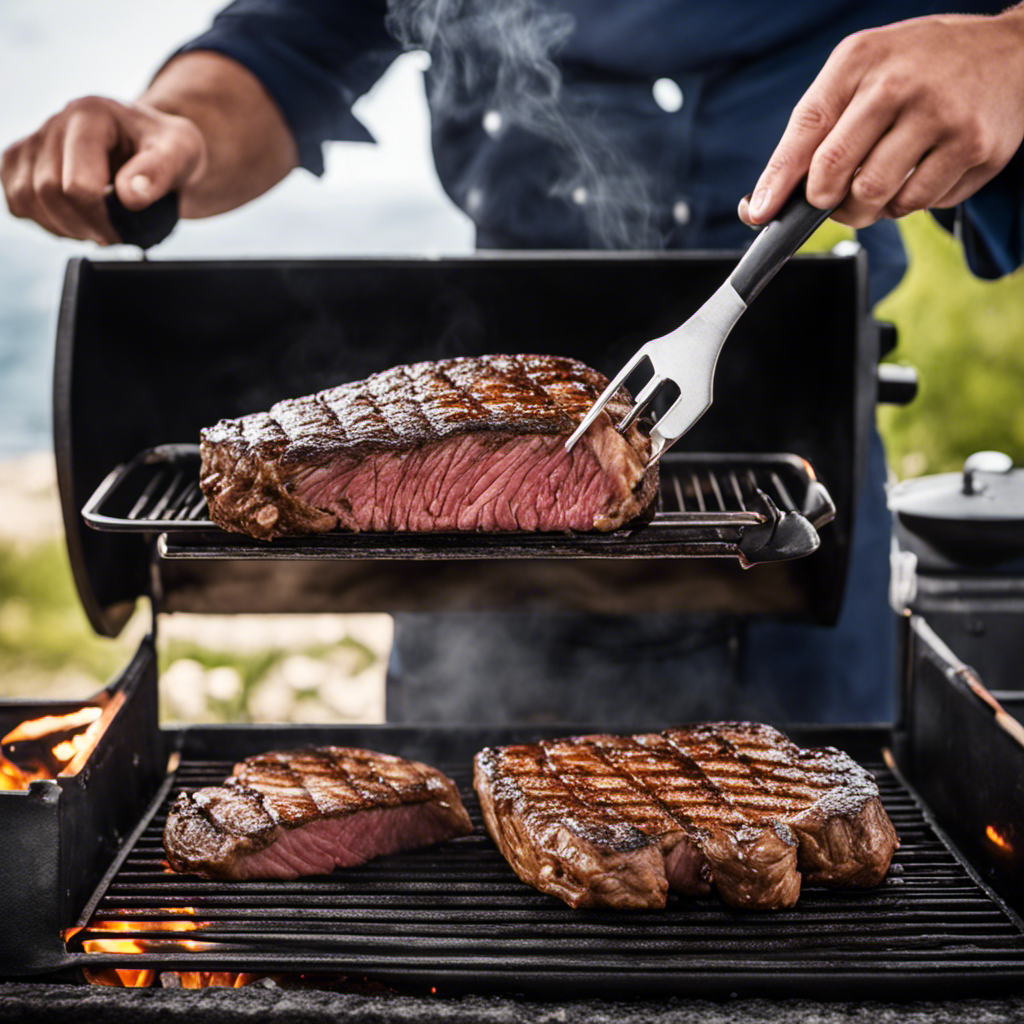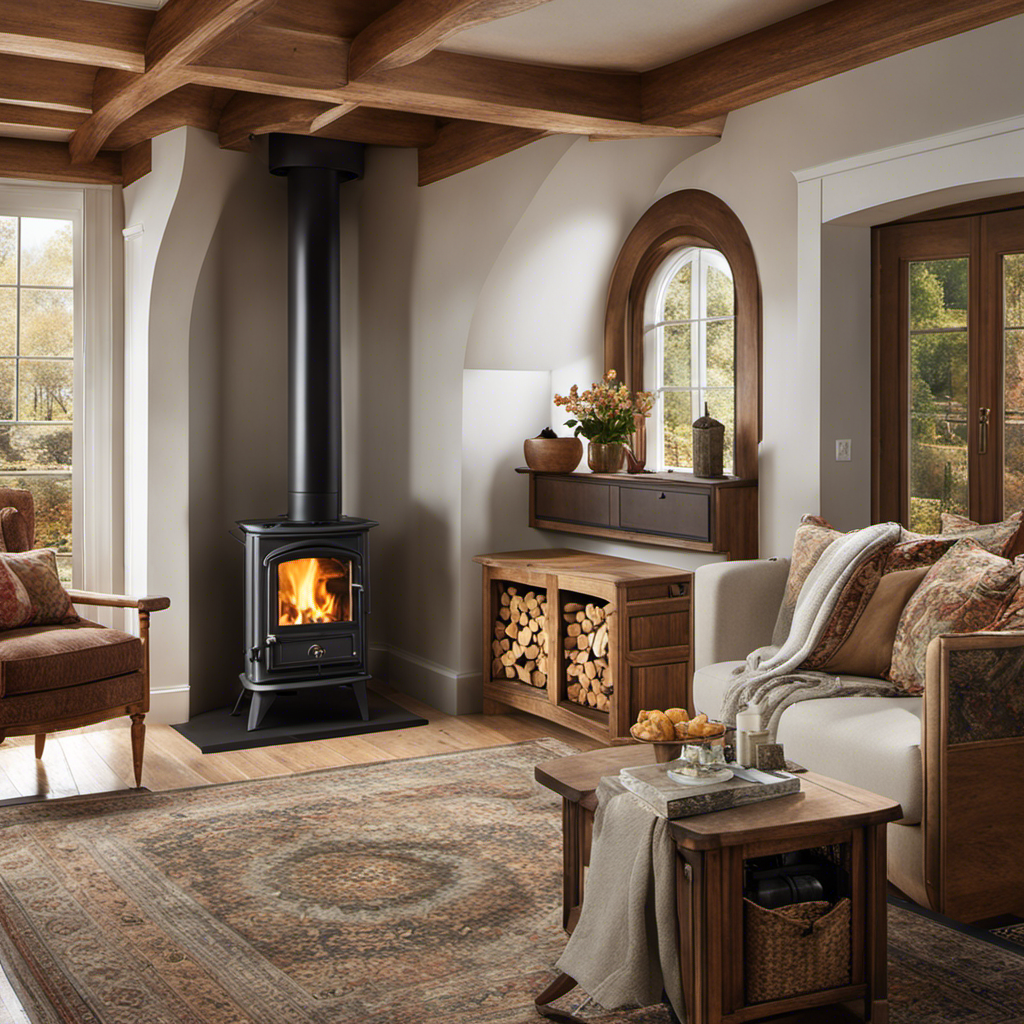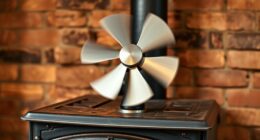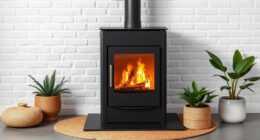As a property owner, I find myself fascinated with the operations of common household appliances. So, when presented with the chance to explore the workings of a wood pellet stove, I eagerly accepted the challenge.
Contrary to traditional fireplaces, these modern marvels offer efficient heating and eco-friendly fuel options. By combining wood pellets with advanced combustion technology, they provide warmth while minimizing environmental impact.
In this article, we’ll explore the various components, ignition process, heat distribution, and maintenance tips for these innovative heating systems. Get ready to uncover the fascinating world of wood pellet stoves!
Key Takeaways
- Wood pellet stoves use compressed wood pellets as fuel for efficient heating.
- They have advanced combustion technology that minimizes environmental impact.
- Wood pellets are made from waste materials, making them a renewable energy source.
- Wood pellet stoves produce little smoke or harmful emissions compared to traditional stoves.
Overview of Wood Pellet Stoves
Wood pellet stoves work by using a fuel made from compressed wood pellets. You can easily purchase and use these pellets to heat your home. These stoves are highly efficient, ensuring that the fuel is burned at its maximum potential. This efficiency is due to the controlled combustion process in the stove. Oxygen is carefully regulated to achieve complete combustion of the wood pellets.
One of the main benefits of using wood pellet stoves is their environmental friendliness. The pellets used as fuel are made from waste materials such as sawdust and wood shavings. This makes them a renewable energy source. Additionally, these stoves produce very little smoke or harmful emissions compared to traditional wood-burning stoves.
Now that we understand how wood pellet stoves work and their benefits, let’s explore the components that make up these efficient heating appliances.
Components of a Wood Pellet Stove
When it comes to wood pellet stoves, understanding the heating mechanism is crucial. The heating process relies on a combustion system that ignites and burns the wood pellets to generate heat.
As for the fuel source and storage, wood pellets are typically made from compressed sawdust or other biomass materials, providing an eco-friendly option for heating.
To ensure optimal performance and safety, regular control and maintenance of the stove’s components, such as the burn pot and exhaust system, are necessary.
Heating Mechanism Explained
To heat your home efficiently, you’ll want to understand how the heating mechanism of a wood pellet stove works. Here’s a breakdown of its operation:
-
Ignition: The stove starts by igniting the wood pellets using an electric element or hot air blown into the combustion chamber.
-
Combustion: As the pellets burn, they release heat energy and produce flames that provide direct heat.
-
Heat Exchange: A fan blows air over metal tubes called heat exchangers. These tubes absorb the heat from the flames and transfer it to the air circulating in your home.
-
Distribution: The heated air is then pushed out through vents or ducts, evenly distributing warmth throughout your living space.
Wood pellet stoves are highly efficient, with efficiency ratings ranging from 70% to 90%. They also have a lower environmental impact compared to traditional wood-burning stoves due to their cleaner combustion process.
Moving on to fuel source and storage…
Fuel Source and Storage
One convenient option for fueling and storing a wood pellet stove is by using bags of pellets. These bags can be easily stored in a garage or shed. Wood pellets are typically made from compacted sawdust or other biomass materials, making them an eco-friendly choice.
When sourcing pellets, it’s important to ensure they meet the specific quality standards recommended by the manufacturer of your stove. Look for pellets that have low moisture content and high energy output to ensure optimal performance. Proper fuel storage is crucial to maintain the quality of the pellets. Store them in a dry area away from moisture and pests.
Now, let’s move on to the next section: control and maintenance of a wood pellet stove. This section is essential for efficient operation and longevity.
Control and Maintenance
Proper control and maintenance of a wood pellet stove is necessary for efficient operation and longevity. To ensure optimal performance, it is important to follow these maintenance tips.
Regularly clean the ash pan and remove any buildup to prevent airflow obstruction. Inspect the venting system for blockages or leaks that may affect combustion efficiency.
Check the gaskets on the door and hopper regularly to ensure a tight seal, preventing heat loss. Replace any damaged gaskets promptly.
Keep an eye on the temperature control settings. Adjust as needed to maintain a comfortable indoor temperature while maximizing fuel efficiency.
Perform an annual professional inspection to identify any potential issues or need for repairs. A well-maintained pellet stove will provide reliable heat during colder months.
Transitioning into the subsequent section about fueling a wood pellet stove, it is important to understand how proper fuel selection affects both performance and maintenance requirements.
Fueling a Wood Pellet Stove
You can easily fuel a wood pellet stove by pouring the pellets into the hopper. Wood pellets are typically made from compressed sawdust and other biomass materials, making them an environmentally friendly option for heating.
Here are four reasons why wood pellets have a positive environmental impact:
- Renewable: Wood pellets come from sustainable sources such as forestry residues and lumber manufacturing byproducts, reducing reliance on non-renewable fossil fuels.
- Lower emissions: When burned in a high-efficiency pellet stove, wood pellets produce fewer greenhouse gas emissions compared to traditional fossil fuels like oil or coal.
- Minimal waste: The production of wood pellets generates minimal waste since they are made from materials that would otherwise be discarded.
- Carbon-neutral: As trees grow, they absorb carbon dioxide from the atmosphere, making wood pellets a carbon-neutral fuel source when responsibly harvested.
Ignition and Combustion Process
The ignition and combustion process in a wood pellet stove begins when the pellets are fed into the firebox and ignited by an electric or manual starter.
Once ignited, the pellets release heat energy through a controlled combustion process. The combustion efficiency of a wood pellet stove is crucial because it determines how effectively the pellets are converted into heat.
To ensure optimal combustion efficiency, the stove is designed with air intake vents that regulate oxygen supply to the firebox. This ensures that there is enough oxygen for complete combustion while minimizing waste gases.
Achieving a high combustion efficiency not only maximizes heat output but also reduces emissions and promotes cleaner burning.
With an understanding of the ignition process and combustion efficiency, we can now explore how this heat is distributed throughout a wood pellet stove without writing ‘step’.
Heat Distribution in a Wood Pellet Stove
When it comes to heat distribution in a wood pellet stove, two key points to consider are air circulation and efficient heat output.
Air circulation plays a crucial role in distributing the heat generated by the stove throughout the room or space.
Efficient heat output refers to how effectively the stove converts fuel into usable heat energy, ensuring maximum warmth with minimal waste.
In this discussion, I will delve into these aspects and explore various techniques and design features that contribute to effective air circulation and efficient heat output in wood pellet stoves.
Air Circulation for Heat
Air is drawn into the wood pellet stove through a combustion blower, which helps circulate heat throughout the room. This process plays a crucial role in maintaining good air quality and energy efficiency.
The combustion blower ensures that enough fresh air enters the stove to support efficient burning of the pellets. As the air is drawn in, it passes through an air wash system that removes any impurities or particles, contributing to improved indoor air quality.
Once inside the stove, the air is heated by coming into contact with the hot surfaces and flames, and then circulated back into the room via a distribution fan. This continuous circulation of warm air helps maintain a comfortable temperature while minimizing heat loss.
Efficient heat output is achieved when this airflow system functions optimally, ensuring maximum utilization of energy from the wood pellets without compromising on comfort or environmental impact.
Efficient Heat Output
To achieve efficient heat output, it is important for the airflow system of a wood pellet stove to function optimally. The fuel efficiency of a wood pellet stove is determined by how effectively it can burn the pellets and convert them into heat. This not only affects the heating capacity but also has an environmental impact by reducing emissions.
The key to efficient fuel usage lies in the combustion process within the stove. When pellets are ignited, they release heat that is then circulated throughout the room via convection or forced air. The airflow system plays a crucial role in this process, ensuring that there is sufficient oxygen supply for complete combustion and proper exhaust ventilation.
Here’s a table summarizing some factors that contribute to efficient heat output:
| Factor | Description |
|---|---|
| Pellet quality | High-quality pellets ensure cleaner burning and higher efficiency |
| Air intake | Adjusting air intake controls allows for optimal combustion |
| Ash removal | Regularly cleaning out ash prevents clogging and improves airflow |
Maintenance and Troubleshooting Tips
Regular maintenance is essential for ensuring optimal performance of your wood pellet stove. Neglecting proper care can lead to various common issues that may affect its efficiency and longevity.
Here are four important maintenance tips to keep in mind:
-
Clean the stove regularly: Remove any ash buildup inside the stove and clean the burn pot using a soft brush or vacuum cleaner. This will prevent clogs and ensure proper airflow.
-
Check the exhaust system: Inspect the venting pipe for any blockages or obstructions that could hinder proper ventilation. Clean or replace any damaged components as needed.
-
Keep the hopper clean: Regularly remove dust, debris, and leftover pellets from the hopper to prevent them from affecting fuel flow.
-
Schedule professional inspections: Have a certified technician inspect your wood pellet stove annually to identify potential issues early on and ensure safe operation.
Frequently Asked Questions
Can a Wood Pellet Stove Be Used as the Primary Heating Source for a Home?
Yes, a wood pellet stove can be used as the primary heating source for a home. It offers high efficiency and many benefits such as cost savings, environmental friendliness, and easy maintenance.
Are Wood Pellets Readily Available and Affordable?
Wood pellets are both readily available and affordable. The market demand for wood pellets has increased due to their sustainability and low environmental impact. The production process ensures a consistent supply.
How Often Do I Need to Clean the Ash From the Stove?
I clean the ash from my wood pellet stove approximately once a week to prevent excessive buildup. Regular cleaning helps maintain optimal performance and prevents clogging in the system.
Can I Use Any Type of Wood Pellets in a Wood Pellet Stove?
Yes, you can use different types of wood pellets in a wood pellet stove. However, using specific wood pellets designed for the stove will provide better performance and efficiency. These pellets have higher heat output and produce less ash.
Is It Safe to Leave a Wood Pellet Stove Unattended?
Yes, it is generally safe to leave a wood pellet stove unattended as long as proper maintenance and safety precautions are followed. Regular cleaning, checking for any malfunctioning parts, and ensuring proper ventilation are important for safe operation.
Conclusion
In conclusion, wood pellet stoves are highly efficient and environmentally friendly heating options. They provide hassle-free operation with advanced components and automated ignition systems. The combustion process ensures complete burning of the pellets, resulting in minimal ash production and maximum heat output. These stoves can efficiently warm up a room or an entire house thanks to their innovative heat distribution methods.
Regular maintenance and troubleshooting will ensure optimal performance and longevity of your wood pellet stove. So why not consider this convenient and cost-effective heating solution for your home?

